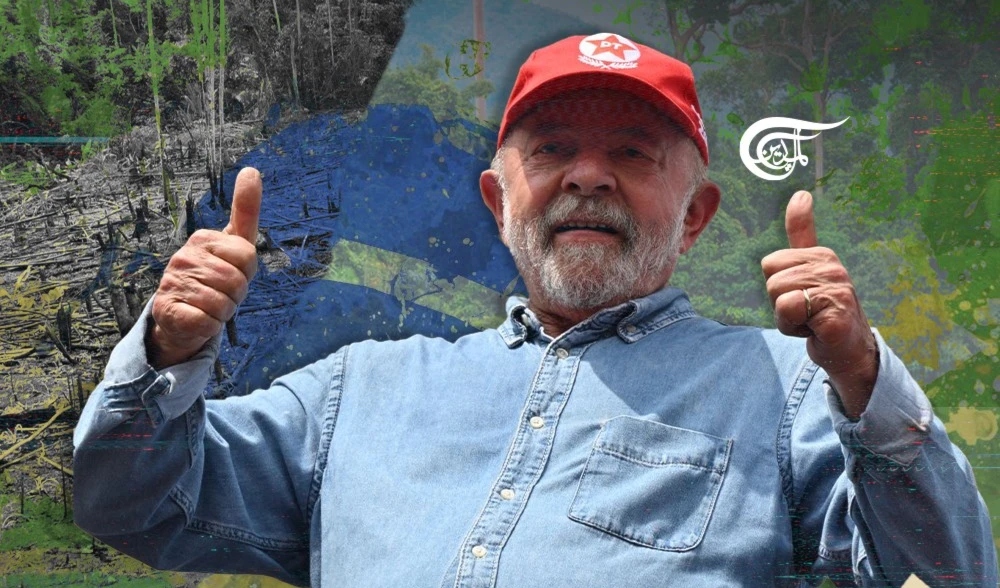Palestine on the verge of new “Intifada”
A third Intifada appears in the horizon. Things have changed, and keep changing. There’s the Gaza factor this time, and the accumulated experience of the Palestinian people encountering the Israeli occupation. Nobody knows how matters could develop if it does happen, but for sure it will be one step further in the direction of the liberation of Palestine and the freedom of its people.
-

The Israeli occupation is facing increasing resistance in the West Bank and Al-Quds; not only public demonstrations and protests, but also armed struggle as well.
Palestine is boiling. The Israeli occupation is facing ever-increasing resistance in the major cities and towns in West Bank and Al-Quds; not only public demonstrations and protests, but also armed struggle as well. Occupation forces, despite their brutality, are having a tough time trying to suppress the Palestinian resistance groups. Since the beginning of 2022, 139 Palestinians, including at least 30 children, were killed and 9,500 more injured – without counting the victims in Gaza Strip during the repeated Israeli bombardment campaigns.
Absence of Political Horizon
Since his second return to power in 2009 until his departure in 2021, Benjamin Netanyahu and his successive right-wing governments had practically frozen all political movements and initiatives with regards to the Palestinian Cause. The so-called “peace process” in the region had reached a complete stalemate. Actually, the idealogy of Netanyahu’s Likud party calls for a total elimination of the other party’s national rights and aspirations. In Likud’s doctrine, the whole land of Palestine belongs to only one side; the Jews. There’s no room, in Netanyahu’s doctrine, for the Palestinians in Palestine. One of the Likud’s historical leaders and former Israeli Prime Minister, Yitzhak Shamir, once said; “The Palestinians have 20 Arab countries to live in, why should they stay here?!”.
Netanyahu’s policy in Palestine could be summarized as follows:
- Maintaining the political status quo, with a subordinate and collaborative Palestinian Authority that helps take the occupation's burden off Israeli shoulders.
- Turning the Palestinians into an Israeli-dependent society by offering them job opportunities as workers and labourers.
Netanyahu and Likud believe they can achieve “peace” with Arab countries in the region based on economic grounds, and without having to accept any real concessions in Palestine.
Palestinian Authority under pressure
The collaborative and brutal nature of the Palestinian Authority has been exposed repeatedly over the past few years. The “security coordination” with the Israelis resulted in the foiling of thousands of resistance operations, and the arrest of a huge number of Palestinian young men involved in fighting the occupation. The PA is becoming, more than ever before, perceived by Palestinian society as a puppet in the hands of “Israel”. Large segments of Palestinians deal with the PA as a “matter of fact” without any belief in its legitimacy or competence.
End of Abbas Era and Succession
Behind the scenes, a fierce battle is taking place to succeed the aging PA President Mahmoud Abbas, 87 years old, who’s still holding two more senior positions; Chairman of the Palestine Liberation Organization and Fatah Movement leader.
The most likely succession scenario is that one of the security apparatus chiefs will take over. “Israel” is apparently in favour of this scenario as it guarantees the continuation of vital security coordination. Former US President Donald Trump supported this scenario, and he even personally met one of the PA’s security chiefs in 2019. However, other important personalities from within the ranks of the Fatah Movement (historically the leading Palestinian national liberation organization) could also be part of the succession battle. It is not clear yet whether the new leader can indeed control the various divisions in the PA, PLO, and Fatah. That won’t be easy, especially since the new leader won’t have the kind of “historical legitimacy” of the first and founding generation of the Palestinian national movement; that of Yasir Arafat and Abbas himself. The scenario of chaos within the PA cannot be totally ruled out.
Resistance Infrastructure
First, it was Jenin, the northern West Bank city and its refugees camp, where the most serious resistance operations took place. That was not surprising considering the long history of Jenin as the stronghold of resistance movements in the occupied West Bank. But quickly the resistance's momentum moved to other major Palestinian cities, and in the neighbouring Nablus, new armed struggle organizations emerged and were responsible for tens of shootings aimed at Israeli troops in the region. The momentum moved to the central part of the West Bank, in Al-Quds, and to the southern area of Al-Khalil as well. Israeli sources acknowledge the widespread nature of the resistance operations, despite the heavy presence of occupation forces and the collaboration of the PA's security apparatus. In the last week of October, 285 Palestinian resistance acts were recorded by the Israeli army, out of which 23 were armed (shootings).
This large number of operations indicates that a kind of “resistance infrastructure” is being established on the ground. Explosives-making hubs, arms smuggling routes, planning rooms and hideouts are all needed for the armed struggle. And above all, the supportive atmosphere in Palestinian society is of utmost importance.
Elements from PA Joining the Fight
This is a very alarming and worrying development for Israeli intelligence circles. In a few cases, some low-ranking elements from the PA were caught participating in the resistance acts against the Israelis. Mostly, it was young men of Fatah background who joined comrades from other Palestinian factions in shooting at occupation forces.
Although this trend is still limited in size and was contained by the PA, it indicates how things could go in the future if large-scale encounters happen. The Palestinian security forces are armed and trained, and if portions of them defect that would be a major boost to the resistance camp.
Operation “Defensive Sheild II”?
The critical and grave situation in the areas of occupied Palestine pushed many of the Israeli military planners and strategists to start talking about the need for Operation “Defensive Sheild II”. In 2002, The Israeli army launched a major large-scale assault on Palestinian cities in the West Bank after the second Intifada intensified. The operation was called Operation “Defensive Sheild”, and its climax was the savage attack on the Jenin refugee camp, which resulted in its total destruction.
This kind of thinking reflects a kind of desperation from the Israeli side. History has proven that “Israel” can never impose a solution on the Palestinian people by force. The Palestinian people did not surrender in the past and won’t surrender in the future, despite decades of occupation and suppression.

 Hussam AbdelKareem
Hussam AbdelKareem
 6 Min Read
6 Min Read











